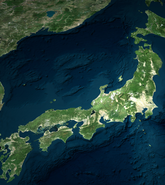London, U.K. – September 14, 2018 – RMS®, a global catastrophe risk modeling and analytics company, has estimated that the insured loss for Japan from Typhoon Jebi will be between USD$3 billion and $5.5billion (¥340 to ¥620billion).
This estimate is based on analysis of the RMS reconstructed event footprint through the RMS Japan Typhoon High Definition model, using the 2018 Japan Typhoon Industry Exposure Database. In addition, to develop and enhance these industry loss estimates, RMS participated in remote and in-person reconnaissance; conducted by risk modelers from the RMS office in Tokyo.
Approximately 80 percent of the loss comes from the Kansai region, where Jebi made a second landfall west of Kobe, impacting the Kyoto-Osaka-Kobe conurbation.
Within the Kansai region, the loss is driven predominantly from Osaka Prefecture. The estimate also accounts for the wind footprint affecting large parts of Japan; including in northern Honshu and in Hokkaido where, when tracking offshore, the typhoon impacted these areas while undergoing extratropical transitioning.
The RMS estimate includes typhoon coastal flooding - observed in Kansai International Airport, in the ports of Kobe and Osaka, and in localized areas of reclaimed land/barrier islands in Osaka Bay. Typhoon driven inland flooding is deemed to be negligible from this event.
Marine cargo losses are included in the estimate, from the Kobe and Osaka ports – primarily from typhoon driven coastal flooding.
Post Loss Amplification is not anticipated to be a significant factor for Typhoon Jebi. The estimate excludes losses from damage to infrastructure and port facilities. Marine hull is not included, neither are claims adjustment expenses, nor some aspects of business interruption including Contingent Business Interruption.
Yasunori Araga, President, RMS Japan, said: “2018 continues to be an eventful year for natural catastrophes in Japan, both for earthquakes and typhoons. The RMS Japan Typhoon High Definition model has been used for this assessment, as has the Japan Earthquake High Definition model in recent months. The investment from RMS into the technology and science for the Japan models reflects the determination to allow all our clients the best view of risk in Japan; which, as recent events show, is of vital importance.”






